Protected: Acorn (Winter) Squash Soup: Health-Boosting Comfort Food
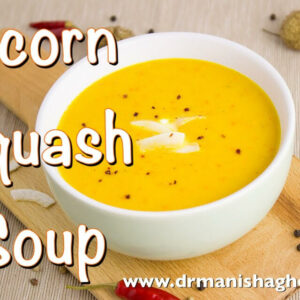
Dr. Manisha Ghei November 19th, 2017
Posted In: Blog Post, Food, Functional Nutrition, Recipes, Soups
Tags: acorn squash, acorn squash soup, antioxidant, immune boosting, recipe, soup recipe, squash, winter squash
25 Surprising Facts About Rheumatoid Arthritis


25 Facts About Rheumatoid Arthritis (RA) Everyone Should Know
Rheumatoid arthritis is an illness that’s widely misunderstood. I believe this is partly due to the fact that many confuse it with osteoarthritis (OA). This mix-up leads people to believe rheumatoid arthritis is caused by aging.
Rheumatoid arthritis (RA) is in no way “normal” aging and shouldn’t ever occur at any point in a healthy person’s life!
Rheumatoid arthritis is an autoimmune disease – meaning the body’s immune system is attacking itself – in the case of RA the immune system attacks a person’s joints.
Almost 1.5 million Americans have rheumatoid arthritis and it’s on the rise. Unfortunately, modern medicine doesn’t have much to offer for reversal of this terrible condition. However, functional medicine and full body integrative and holistic approaches have resulted in full recoveries and promising outcomes.
I am a perfect example of this. I was diagnosed with Rheumatoid Arthritis (I was also given many other additional diagnoses – another blog on this later) more than a decade ago. When modern medicine had no answers for me other than prescribing toxic immunosuppressive drugs and steroids, I voluntarily chose not to use those. As a practicing Internal medicine doctor who had a special interest in Rheumatology, I knew all too well, the terrible side effects and long term health consequences of these drugs. I was determined to find other answers!
Against conventional wisdom, I decided to be my own guinea pig and looked for other safer but effective alternatives. I researched and studied the fields of nutrition, and Integrative, Holistic, and Functional Medicine. I trained and became board certified in these, using all that I learnt, first on myself. It was trial and error at that point for me but I eventually healed myself from this crippling disease and from all other diagnoses that conventional medicine had given to my wide range of chronic symptoms!
My health completely recovered, and I no longer carry the clinical or lab diagnosis of RA, nor do I suffer from the pain or the disabling fatigue which is characteristic of this disease. In fact, I feel more energetic and vibrant than I did even in my 20s. I now use the same healing modalities and step-wise approach that worked for me, on my patients to help them in their recovery process.
As with everything else in life, we are all individuals with unique and varied characteristics, so no one size of treatment can fit all. Everyone with RA will have different root cause(s). I help my patients and clients find their particular root causes and then use a very personalized treatment approach that is right for their body.
In an effort to clear the confusion and misunderstanding surrounding rheumatoid arthritis, I’ve compiled 25 facts about rheumatoid arthritis that everyone should know. RA is a condition that can strike any person at any age – and it’s best to know these important facts.
1. Rheumatoid arthritis (RA) is very different from osteoarthritis (OA)
RA is an autoimmune disease while osteoarthritis is caused by erosion of the cartilage and bones due to aging, overuse or obesity. Because these conditions are completely different, so are their treatments and it is important not to confuse the two.
2. Rheumatoid arthritis is not ‘normal’ wear and tear of the joints
Rheumatoid arthritis occurs when the body’s immune system attacks its joints. This attack results in painful inflammation of the hands, feet, knees and other joints. RA can also impact other tissues in the body such as the heart, lungs, mouth, and eyes.
3. Rheumatoid arthritis is more prevalent now than ever before
Many articles on RA like to cite the fact that there’s very little evidence RA existed before the 1500’s, however that fact remains uncertain. What we do know, is RA is more prevalent now than ever before and it’s incidence is on the rise. This fact leads many to believe it is a disease caused primarily by environmental factors such as diet and toxins.
4. Children can develop Rheumatoid Arthritis
It’s possible for children to develop RA -known as Juvenile Rheumatoid Arthritis (JRA) – because it’s an autoimmune condition, not caused by aging. In fact, children as young as five years old can develop RA, which is a deeply troubling to witness.
5. Rheumatoid Arthritis is usually worst in the hands and feet
Though RA can impact any joint and many tissues in the body, it’s most common in the hands and feet. RA attacks the synovial lining between the bones of a joint, causing it to become inflamed, and ultimately damaging the tissue. Over time, RA can cause deformity to the affected joint.
6. Women are three times more likely to develop RA
For reasons that are not fully understood, women are three times more likely to develop RA than men. It is thought that hormones may play a role. Also, the prevalence of RA among women is on the rise.
7. Geography influences RA risk
RA is more common in people who live further from the equator, which suggests that adequate sunshine could help reduce RA risk, which leads me to my next point…
8. Vitamin D reduces risk of developing RA
Sufficient vitamin D significantly reduces your risk of developing RA and sunshine is your best source of vitamin D. Vitamin D has been linked to a reduced risk for nearly all autoimmune disease, so it’s a good idea to daily get about 20 minutes of sunshine, before applying sunscreen (without burning of course). If you have the ability to test your vitamin D levels, please do so and take supplemental Vitamin D under supervision. In my practice I use different strengths of Vitamin D based on my patient’s levels.
9. Exercise is usually recommended in RA
Surprising to some, physical therapy has been shown to improve symptoms of RA. Decades ago, doctors believed exercise would put unnecessary stress on joints and recommended against it. This belief is not true and proper exercise with rheumatoid arthritis is now encouraged.
10. Diet is a vital part of treatment of Rheumatoid Arthritis
Anti-inflammatory diets low in gluten, sugar, processed and fried foods are an integral part of the functional medicine approach to RA. I would recommend working with a Functional medicine doctor and getting detailed food, nutritional and gut assessment so your individual causes for RA can be specifically dealt with.
11. Chronic inflammation is a major component of RA
Rheumatoid arthritis goes hand-in-hand with chronic inflammation. This means you can do yourself a world of good by incorporating anti-inflammatory practices in your life through diet, by reducing the burden of toxins in your body, and by targeted supplementation. The fire needs to be quenched!
12. Muscle atrophy is a concern in RA
Due to the lack of appetite that accompanies RA, coupled with the misguided but common belief that exercise will make RA worse, many people in the past suffered from muscle atrophy. These issues led to the nickname “wasting disease” because those with RA were often rail-thin and “wasting away.” A typical complaint is difficulty opening jars. Adding a daily protein drink or two to your nutritional supplementation can most certainly help replenish muscle strength. . My favorite protein powders are ones which also help gentle detox of the liver and the body.
13. Loss of appetite is common in RA
Due to inflammation of the gut, many with RA experience a strong loss of appetite, which contributes to weakness and muscle atrophy. The best way to fight this is through healing the gut and reducing inflammation.
14. A genetic risk factor called a “shared epitope” in RA
A shared epitope (SE) is a genetic variant that increases the likelihood of developing RA when present, in fact some studies suggest that SE is the single most significant genetic risk factor for RA. Though there’s a genetic predisposition for RA, most believe risk is more associated with environmental factors. Remember, genes are loaded guns but environmental exposures hold the trigger!
15. Heart disease is a problem for RA patients
Having RA significantly increases your risk for developing cardiovascular disease and having a heart attack. This is likely due to the characteristic systemic inflammation present in both conditions.
16. Diabetes risk is higher in RA patients
RA increases the risk of many illnesses, including diabetes, though this could also be caused by the conventional RA treatments, which quite often include intermittent or chronic steroid use. Steroids increase the risk for diabetes. Opting for a functional medicine approach to rheumatoid arthritis could reduce this risk.
17. Fibromyalgia risk is higher in RA patients
There is an increased risk for developing fibromyalgia in patients with RA. Suffering from a combination of these two illnesses can lead to chronic pain, severe depression, fatigue, as well as memory and cognitive issues.
18. Lung disease is a common complication in RA patients
Interstitial lung disease, a serious lung disease can be a frequent complication of RA when the disease activity is not properly controlled, in fact after joints, lungs are the second most common organ to be affected by this disease. Serious respiratory conditions, infections and pneumonia can also occur due to conventional treatments which suppress the immune function; or due to lifestyle habits such as smoking. Any symptom of shortness of breath should be properly investigated.
19. Pregnancy can temporarily improve RA symptoms
Pregnancy often improves symptoms of many diseases, including RA. I believe this is because of the elevated anti-inflammatory elements present in the body during pregnancy, such as the DAO enzyme. However, after a person with RA gives birth, they could experience a flare-up and should plan with their doctor accordingly. Postpartum follow up of RA and for that matter any autoimmune condition is crucial.
20. Giving birth reduces risk for developing RA
Though the reason behind this is not fully understood, research has shown that giving birth reduces a woman’s overall risk of developing RA compared with someone who has never given birth.
21. Smoking increases RA risk and worsens symptoms overall
Smoking cigarettes increases a person’s risk for developing RA. Additionally, smoking cigarettes is a serious trigger for a flare of RA and can worsen symptoms overall.
22. It’s unclear whether alcohol is bad or good for RA
Studies have been published suggesting some alcohol is both good and bad for people affected by RA. It’s my recommendation that you consume as little as possible because alcohol makes it difficult for your body to work on ridding itself of toxins in your everyday life that could be contributing to your RA.
23. Pollution increases Rheumatoid Arthritis risk
Pollution is known to cause inflammation in the body, so it’s no surprise that researchers found women who lived within a third of a mile of a major highway had higher prevalence of systemic inflammation and RA.
24. Psychological stress can have a role in RA
Stress is one of the factors that may not only cause and but also exacerbate the progression of chronic inflammatory diseases such as RA. Relapses are common under conditions of emotional stress. Treatments based on mindful awareness and acceptance therapies lead to reductions in daily pain-related sense of doom and disability, fatigue, as well as stress-related anxiety in RA patients. A holistic mind-body approach is paramount along with other Functional medicine treatments for RA.
25. Functional medicine solutions are promising in RA
Steroids and NSAIDs (some of the conventional treatments for RA) are not a good long term treatment plan. Not only do they not offer long term solutions, they are harmful to the gut and the immune system! They work against the very systems that need healing.
Instead try a functional medicine approach to RA treatment with your Functional Medicine doctor, which includes:
- Anti-inflammatory diet – Free of gluten, sugar, fried, and processed foods.
- Reducing toxin burden – Cleaning up your household products and cosmetics is a good start. Only use ‘clean’ personal care products without hormone dysrupting chemicals.
- Healing a leaky gut – You’ll need to repair your gut lining to help your immune system regain strength. I use a special gut support powder, digestive enzymes and probiotics to balance the gastrointestinal tract function.
- Check for bacterial and yeast overgrowth – work with your Functional Medicine doctor to diagnose and treat these.
- Check for mycotoxins – Your doctor can also test you for mycotoxins which come from mold. Read my article here on mold clean-up..
- Heal any infections – Infections with viruses, yeast, parasites and bacteria can mess with your gut health. Among other infectious causes, Epstein-Barr virus is thought to be a trigger of RA.
- Supplementation – Omega-3s, probiotics, vitamin D3, bioavailable forms of curcumin are some of the simple ways to fight the chronic inflammation caused by RA.
Rheumatoid arthritis is a debilitating disease but there are better solutions beyond prescriptions. Reach out to your functional medicine doctor if you or someone you love suffers from rheumatoid arthritis.
Please share this article to help dispel common myths surrounding rheumatoid arthritis.
Please also share how you manage your disease and help others learn from your experiences.
Resources:
https://www.ncbi.nlm.nih.gov/pubmedhealth/PMHT0024678/
http://www.arthritis.org/about-arthritis/types/rheumatoid-arthritis/what-is-rheumatoid-arthritis.php
https://www.ncbi.nlm.nih.gov/pmc/articles/PMC3119866/
https://www.niams.nih.gov/health_info/Juv_Arthritis/default.asp
https://www.rheumatoidarthritis.org/ra/
https://www.ncbi.nlm.nih.gov/pubmed/14730601
https://www.ncbi.nlm.nih.gov/pubmed/28808949
https://www.ncbi.nlm.nih.gov/pmc/articles/PMC3766928/
https://www.ncbi.nlm.nih.gov/pmc/articles/PMC2921962/
https://www.ncbi.nlm.nih.gov/pubmed/24736263
https://www.ncbi.nlm.nih.gov/pmc/articles/PMC3890244/
https://www.cdc.gov/arthritis/basics/rheumatoid-arthritis.html
https://www.ncbi.nlm.nih.gov/pmc/articles/PMC4284707/
https://www.ncbi.nlm.nih.gov/pmc/articles/PMC2717131/
https://www.ncbi.nlm.nih.gov/pubmed/24850878
https://www.ncbi.nlm.nih.gov/pubmed/28638686
https://www.ncbi.nlm.nih.gov/pubmed/25365778
https://www.ncbi.nlm.nih.gov/pmc/articles/PMC1526553/
Dr. Manisha Ghei October 3rd, 2017
Posted In: Blog Post, Functional Medicine, Functional Nutrition, Integrative Medicine, Rheumatoid Arthritis, Uncategorized
Tags: Autoimmune, Autoimmune disease, Autoimmune MD, Autoimmunity, Chronic fatigue syndrome, fibromyalgia, functional medicine, heart health, Inflammation, Joint, nutrition, OA, Osteoarthritis, RA, Rheumatoid Arthritis, supplements, women
Your Ultimate Hurricane Clean Up Guide

Your Ultimate Hurricane Clean Up Guide – From Your Home to Your Body
Now that most of Hurricane Harvey’s and Irma’s waters have subsided and we are left to assess the damage, an important time presents itself. Hurricane clean-up is more than gathering debris and clearing out the mud that remains, it involves protecting ourselves from current and future threats. This most certainly includes invisible killers released by the toxic mold that creeps into water damaged buildings and wreaks havoc on our health.
When we think of hurricane clean-up, many don’t realize the significance mold has on our health. It’s hard to keep this invisible threat at the forefront of our efforts when there’s so much wreckage in our path, but we must.
Mold remediation is possibly the most important of aspect of hurricane clean up.
If mold remediation is not done properly and regularly checked for over the years, you run the risk of making yourself and your family very, very sick. As a Functional Medicine physician who helps people with serious chronic diseases I see this all too often!
Now that you’re safe from the immediate dangers of the storm, I cannot emphasize enough the importance of cleaning up from this hurricane with mold prevention and remediation as priority number one.
Is mold a new health concern?
Mold has always played a role in human health, however it’s only in the past few decades that we’ve started building houses out of what’s essentially paper. Drywall and wood are ideal hosts for robust mold blooms.
All mold requires moisture to grow and thrive. It’s this combination of perfect host materials and high moisture content due to flooding that makes hurricane damaged building a breeding ground for toxic mold. Unfortunately, the Texas and Florida heat exacerbates this situation.
How mold works
Mold’s role in nature is that of a decomposer. Mold grows on dead organic matter, such as leaves and trees, breaking it down. Mold reproduces through the release of tiny airborne spores. These spores are invisible and can be toxic.
Mold toxins have been linked to a whole host of medical issues including autoimmune diseases, such as rheumatoid arthritis, DNA damage, neurotoxicity, and myelin breakdown which can contribute to Alzheimer’s, Parkinson’s, and multiple sclerosis. In fact, Inhalational Alzheimer’s Disease (IAD) is a subtype of Alzheimer’s caused by biotoxins, which has only recently been identified.
The mitochondria of our cells evolved from bacteria, and bacteria’s natural enemy is mold and the toxins mold releases. So, it makes sense that certain molds we encounter would carry the unique ability to damage our mitochondria. It’s how we develop antibiotics (think Penicillin). We use mold to create antibiotics responsible for killing harmful bacteria (and sometimes inadvertently we end up also killing the good bacteria).
Properly cleaning up after a hurricane is critical to preventing damaging mold from growing in your home. It may seem daunting to take the extra steps necessary for killing and preventing future mold growth, but your health and the health of your family depends on it.
Symptoms of mold exposure
Mold can move in surprisingly quick after a flood. In fact, it can already be there when you start the initial work on your house, only a couple of days after the storm.
The symptoms of mold exposure include debilitating fatigue and mood swings, so it could be possible to mistake mold exposure symptoms due to the exhaustion as well as the emotionally taxing situation you’re in, but paying close attention to your new symptoms is the key. The signs and symptoms of mold exposure can include:
- Chronic fatigue
- Muscle weakness and pain
- Anxiety
- Mood swings
- Difficulty concentrating
- Poor memory
- Chronic headaches
- Bruising
- Nosebleeds
- Vertigo
- Stiff joints
- Tingly legs and arms
- Insatiable thirst
- Metallic taste
- New allergies
- Rheumatoid arthritis
- Crohn’s disease
- Hashimoto’s thyroiditis
- Other Autoimmune disease(s)
The tricky thing about mold is its symptoms present differently for everyone. This is why it is so hard to diagnose early.
To further complicate matters, there’s an actual gene that 25 percent of the population carries which makes them incredibly sensitive to mold. The HLA-DR gene prevents the individual’s body from successfully ridding itself of toxins. Think of the canaries in a coal mine! I should know as I surely am one!
Often, a family doesn’t realize there’s mold in the house until a person with this gene becomes very ill. Whether or not you have the HLA-DR gene, you should thoroughly clean your house using proper mold remediation protocol. Just because you’re not extra sensitive to mold toxins doesn’t mean you aren’t negatively impacted by them, it just might take you longer for you to notice.
Cleaning up after a flood
Cleaning up after a flood should be taken very seriously. There’s a chance mold has already moved into your home. As you rip out drywall and get your home ready to rebuild, it’s safest to assume mold has already moved in and take necessary precautions.
Also, if you are planning on rebuilding, you should have your home tested by a qualified mold inspector. You’ll need an ERMI test done on your house before any remodeling begins or you run the risk of covering up mold growth.
Remember, you are cleaning up to prevent the growth of a substance that can cause you and your loved ones’ serious long term illnesses, and it takes less than a day for mold to start growing. Be vigilant.
Here’s what you should do when cleaning up a flooded building:
- Wear a Tyvek suit and face mask when cleaning up. You should use either a full-face mask or a half-face mask with goggles. Moldex makes masks specifically for mold clean up.
- Everything your Tyvek suit touches when you leave the house could become contaminated – this includes your car. Remove your Tyvek suit and throw it away or leave it outside the house each time you leave the contaminated building.
- If you start feeling ill, tired, crave sugar or are overly emotional while you’re cleaning, you should leave the house immediately and upgrade your protective equipment before returning to work.
- You’ll need to clean everything with a suitable cleaner (NOT bleach) and follow up with an encapsulant. Encapsulants are cleaning products with fungicides that prevent mold from coming back.
Porous materials, such as wood, are of greater concern when cleaning, but for the sake of simplicity I’m going to recommend you use the same cleaning procedure for all surfaces, and this does NOT include bleach. Bleach won’t kill the mold in porous materials and it will only cause future mold to grow back stronger.
Instead do this:
A formula I have used in my home in the past when I’ve had minor leaks:
- 1 gallon hot water
- ½ cup white vinegar
- 1 cup Borax
Mix well. Put above mixture in a spray bottle. Add 10-15 drops of Melaleuca essential oil to the spray bottle each time you refill it. Shake well and spray on affected surfaces.
(Consider diffusing clove, melaleuca, eucalyptus, lemon, and cinnamon essential oils in multiple diffusers throughout your home)
-
Follow up with an encapsulant, such as Caliwel or Concrobium.
- Careful not to cross-contaminate. This means anything from your flooded home should not be taken into a clean environment (your car).
- You’ll need to seriously consider what’s worth putting your health in danger as you go through all the porous items from your flooded home. This means clothing, curtains, books, furniture, bedding, photos and more.
Fabric should be thrown away when possible. If you must keep something, have it dry cleaned. Photos should be laminated or reprinted.
After you’ve gone through this process and before you begin remodeling, you should have an ERMI test done by a mold professional.
You should also have your home (and yourself) tested for mold allergy as well as mold toxins (known as mycotoxins) over the next year or two – possibly longer, especially if vague and troublesome symptoms persist.
Supporting your immune system during flood clean up
While you’re cleaning up a flood damaged home, you should try to support your immune system as best as you can. Your body is going to be exposed to all kinds of chemicals, toxins, and potentially mold, so it will need any extra support you can offer.
The four immune system supporting recommendations I suggest during clean up include:
- An immune boosting diet
- Reducing your toxic burden
- Supplementation
- Be good to yourself/stress reduction
First, I recommend an immune boosting diet.
This means a nutrient-dense diet of healthy fats, proteins, and plenty of vegetables.
Avoid sugar and carbs because they promote inflammation and make it harder for your mitochondria and immune system to do their jobs. Instead healthy fats and proteins should be your main source of fuel.
Also, I recommend avoiding alcohol during clean-up because your liver and immune system need to be freed up to detox your body from more important toxins.
Second, reduce your toxic burden.
Outside of home clean-up, consider other sources of toxins you’d benefit from removing from your life. You can reduce toxin burden by eliminating items such as:
- Harmful cleaning products
- Toxin-containing personal care products
- Fish high in mercury and other metals
- Paints with VOCs
- Non-stick pans
- Fried and charred food
- Artificial sweeteners
- BPA-containing plastics
- Metal dental fillings
Yes, some of these are for later but I just want you to have a full resource.
As a side note, candida overgrowth in your body increases your toxic burden too. I often get asked if candida or yeast overgrowth is because of mold, so clarifying here:
If you have symptoms of candida overgrowth, it is not due to inhaling it in your home air. You may have toxic mold in your house but the air in your home does not typically contain much Candida albicans. However, exposure to mold can seriously weaken the immune system making our body more prone to candida flares within our digestive system (candida is present in small amounts in all of our gastrointestinal systems), which when severe can lead to systemic and widespread symptoms in the body.
In addition, mold exposure can make one more sensitive to all kinds of fungi (candida is a fungus) and mold. Developing an allergy to mold leads to hypersensitivity to candida and starts a viscous cycle of inflammation and immune system dysfunction with far reaching consequences.
As a free gift please access my Candida Control Foods & Remedies Guide. My hope is that in it you will find some useful strategies to prevent, and get rid of candida overgrowth and the chronic symptoms it can cause. Supporting your body with these strategies will help in re-balancing your immune system while you deal with the effects of water damage.
Third, I recommend adding immune supporting supplements to your diet.
Immune system boosting supplements include:
- A balanced multivitamin. Choose one with iron if you are a menstruating woman or have a known iron deficiency. Choose iron free for everyone else.
- Vitamin B complex (for methylation support)
- Vitamin C (with bioflavonoids – needed for a healthy immune system)
- Vitamin D (to support the immune system and protect against disease development)
- Vitamin E (defense against free radicals). Choose one with mixed tocopherols
- Probiotics (improves gut health and reduces inflammation). Choose ones with multiple strains of beneficial bacteria.
- Glutathione (master antioxidant of the body, aids in defense against free radicals). Choose easily bioavailable forms like S-acetyl glutathione or precursors of glutathione like N acetyl cysteine (NAC).
- Zinc (important for thyroid and immune system health)
- Omega 3 in a balanced ratio (reduces inflammation, immune support) with some beneficial omega 6s and 9s in your diet as well. Here is an article I wrote about Omegas.
- Magnesium citrate (important for overall health and prevents constipation). During this time it’s super important your body is able to detoxify efficiently, which is why it’s critical you avoid constipation at all costs.
- If you have 2-3 bowel movements a day already, you can choose a chelated form of Magnesium glycinate instead. Most of us are low in magnesium and it can be a crucial nutrient especially during stressful periods.
- Selenium (reduces inflammation, supports thyroid function, and reduces free radical stress) You can get selenium from a good quality multivitamin, and also eat a couple of brazil nuts daily.
- liver detox support with a combination formula with milk thistle, n-acetylcysteine, alpha lipoic acid, calcium-D-glucarate, turmeric, resveratrol, methylated B vitamins, and essential trace minerals etc.
- hormonal detox support– Yes, your own hormones can become toxins if not eliminated properly from the body.
- Activated charcoal (defense against free radicals)
I added links to supplements I’ve formulated over the years because I know they are of the highest-quality, but honestly please buy these from any source your know to be trustworthy and professional grade as well as GMP certified. It really doesn’t matter where you get these from, so long as you’re getting them!
It’s so important to take care of yourself right now!
And finally, be good to yourself.
You are going through one of the most emotional and physically taxing times of your life right now.
It’s important for your health that you manage stress levels and take care of your emotional wellbeing. It may seem like there’s not enough time for these practices but your long-term health will thank you. Try and make time for:
- Quality family time
- High-quality sleep
- Gratitude
- Exercise
- Meditation
- Yoga
- Journaling
- Things that make you happy
An immune boosting diet, reducing toxin burden, supplementation, and self-care are all critical to your overall wellbeing right now.
Working with your functional medicine doctor
If you’re working in a water-damaged home or moving back into a water-damaged home, you need to be more vigilant than you’ve ever been before about your health. The problem with mold is it’s can be almost impossible to see, so paying careful attention to your health is your best barometer for mold toxin impact.
I recommend making an appointment with a functional medicine doctor who specializes in chronic disease management, autoimmune disease(s) and mold toxin exposure. Tell your doctor, you and your home (or work) have been impacted by a flood and you want to pay close attention to your mycotoxin levels and any preliminary symptoms of impending autoimmune disease.
Your functional medicine doctor can test you for mycotoxins and help you develop a preventative plan for mold exposure. Even if your home is cleared for mold and your initial tests come back clean, I recommend checking everything again 3, 6, 9 months and a year later.
After the initial year of checks, I recommend health and home checks every six months to once a year at least after that if your home has been flooded. The reason I recommend such frequent checks is because the earlier you catch mold, the more efficiently and effectively it can be dealt with.
Remember, we’re talking about a substance capable of causing autoimmune diseases, such as multiple sclerosis, rheumatoid arthritis, hashimoto’s thyroiditis, DNA damage, neurotoxicity, Alzheimer’s, and other neuro-degenerative diseases.
Mold is not to be taken lightly.
It’s personal for me!
My neighborhood was flooded during Hurricane Harvey. My family and I had a very close call. Although we don’t live in a flood zone, we were suddenly placed under mandatory evacuation orders on the second day of the storm. To evacuate or to stay put was one of the hardest decisions that my husband and I had to make for our family’s safety and well-being.
After a lot of contemplation we decided to move everyone to the second floor of the house along with essential supplies. The reason for this decision was the ill health of my mother who is physically disabled, with early dementia and lives with us. We couldn’t attempt to evacuate in a car with her and risk getting stuck enroute due to road and highway flooding and closures. That would have been worse! So we stayed…
The water came all the way up to the very edge of our home but we did not have any flooding; unfortunately many of our neighbors weren’t as fortunate. Hurricane Harvey has taken a physical and emotional toll on our community. I myself felt like I was dealing with anxiety, sleep issues, and some form of PTSD for many weeks after. I cannot fathom how those who lost everything must feel.
While I continue to send thoughts and prayers their way, and have continued to collect and donate food and supplies to shelters and individual families in need, I do also hope to spread the word about flood clean up and mold toxin exposure so we prevent future illnesses.
Mold clean up and prevention should be at the forefront of our concerns during the recovery process from the devastation that a hurricane leaves behind.
While I write this, my thoughts and prayers are with all those who are still facing the flash flooding and devastation from Hurricane Maria.
Please share this article with your loved ones who’ve been affected by the recent hurricanes.
My prayers continue to go out to all those affected by the recent hurricanes Harvey, Irma and Maria and others in the past.
Resources:
https://www.ncbi.nlm.nih.gov/pmc/articles/PMC164220/
https://www.ncbi.nlm.nih.gov/pubmed/15143854
https://www.ncbi.nlm.nih.gov/pmc/articles/PMC2367102/
https://www.ncbi.nlm.nih.gov/pmc/articles/PMC3179161/
https://www.ncbi.nlm.nih.gov/pubmed/10091857
https://www.ncbi.nlm.nih.gov/pmc/articles/PMC4789584/
http:/www.survivingmold.com/diagnosis/ermi-testing
https://www.amazon.com/s/ref=nb_sb_noss_2?url=search-alias%3Dindustrial&field-keywords=moldex+mask
The information offered by this blog is presented for educational purposes. Nothing contained within should be construed as nor is intended to be used for medical diagnosis or treatment. This information should not be used in place of the advice of your physician or other qualified health care provider. Always consult with your physician or other qualified health care provider before embarking on a new treatment, diet or fitness program. You should never disregard medical advice or delay in seeking it because of any information contained within this blog. © Praana Integrative Medicine & Holistic Health Center, LLC. All rights reserved
Dr. Manisha Ghei September 26th, 2017
Posted In: Blog Post, Flooding, Functional Medicine, Hurricane recovery, Mold
Tags: Autoimmune disease, borax, candida, candida overgrowth, detox, diet, encapsulants, flood, flooding, floodwaters, Florida, Harvey, Houston, Hurricane, Hurricane clean up, Hurricane Harvey, Hurricane Irma, Hurricane Maria, Hurricanes, immune system, Irma, Maria, mold, mold clean up, mold exposure, mold growth, mycotoxin, Puerto Rico, toxic mold, toxins, yeast overgrowth
8 Essential facts about Omegas -Essential Fatty Acids (EFAs)

Essential Fatty Acids (EFAs) – Essential to Brain Health
I’m often asked what are the few nutrients I think are absolutely imperative and essential for good health especially in this modern world. One of the top nutrients in my list is Omega Essential Fatty Acids. Every patient who comes into my practice gets their Omega 3 levels and the ratio of Omega 3s to other omegas, like 6s, 9s etc tested and an appropriate individualized diet and supplementation (if required) plan created for them.
Decades of study and countless books have gone into exploring Omega-3 and the role it plays in our physical and mental health.
Here are 8 Essential Facts about this ESSENTIAL substance.
1. Omega-3 is called “essential” because it’s necessary for our health, but we cannot make it on our own.
2. One essential Omega-3 fatty acid is a substance called α-linolenic acid (ALA). Our body can use ALA to make two other essential fatty acids: DHA (docosahexaenoic acid) and EPA (eicosapentaenoic acid). However, we don’t make enough to meet daily needs for optimal health and the conversion of ALA to DHA and EPA is not efficient enough in most humans.
If you are deficient in Vitamin Bs of various kinds, Vitamin C, minerals like Magnesium and zinc you will not optimally convert ALA into DHA and EPA.
Have your physician test you for optimal levels of these nutrients and adjust your dietary plan and your supplement schedule to optimize the levels of these key supportive nutrients.
You may benefit from supplementation with:
- a B complex containing activated forms of B vitamins,
- a highly absorbable and bio-available form of magnesium (that does not cause diarrhea)
- a highly absorbable and bio-available form of zinc
- a highly absorbable and bio-available form of Vitamin C with bioflavanoids
- A comprehensive Multivitamin and Multimineral supplement. If you’re a menstruating woman, you may wish to take the version that contains iron as well.
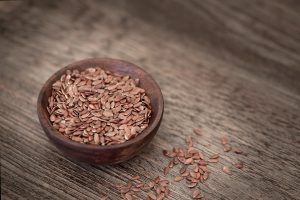
3. Omega-3 is critical for preventing symptoms of chronic illness, such as inflammation, chronic fatigue, joint and muscle pain and poor elimination of toxins.
4. The brain thrives on Omega-3. Without enough, we can experience learning problems, memory issues, brain fog, ADHD symptoms and other neurological symptoms. Proper levels help protect us from Alzheimer’s Disease. Balanced omega fatty acids are crucial in cardiovascular health and healthy blood pressure maintenance and insulin and blood sugar balance.
5. Food is a great source of Omega-3. Consider fatty fish like salmon, tuna, halibut, krill, flaxseed, walnuts and chia seeds (the latter 3 however give us ALA which needs to be converted to DHA & EPA).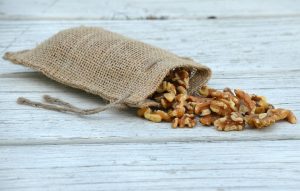
6. It’s difficult to get sufficient amounts from food alone. Most Americans consume a daily average of 130 mg EPA + DHA – way below the recommended 1000-2000 mg. Consider adding a supplement to your diet. The Omega 3 supplement my family and I use, and I recommend to patients in my practice is International Fish Oil Standards (IFOS) five-star certified, which assures the highest level of purity, stability, and potency in fish oils. Each dose of this concentrated fish oil provides a whopping 900 mg of EPA and DHA in one softgel. Always check the the EPA and DHA content at the back of your bottle, as many times manufacturers will list a certain mg of fish oil on the front label of the fish oil bottle and it does not provide the accurate amounts of EPA and DHA that each serving has. This can mislead the buyer.
7. Acquiring Omega-3 must be done in a focused fashion, with attention paid to the balance between Omega-3 and Omega-6 (a group of fatty acids linked to increased inflammation). An imbalance can adversely impact well being and brain health.
8. Not all Omega 6s are bad! One known as DGLA (Dihomo-gamma-Linoleic Acid) is an antiinflammatory Omega 6 fatty acid. Other ones known as LA (Linoleic Acid) and AA (Arachindonic Acid) can be inflammatory in high amounts or when not in balanced amounts compared with DGLA. 
In my testing I look at individual levels of these key Omega 3 and 6 Fatty Acids but also the ratio of Linoleic to DGLA as seen in the image above. A simple blood test can give me all of the above information.
Consult your Functional Medicine and / or Integrative Holistic Medicine physician to assess your intake, test your levels, and explore ways to help you protect your health and cognitive function with essential Omegas.
References:
-
University of Maryland CAM Database Online. “Omega-3 Fatty Acids” Accessed 7 Nov 2016: http://umm.edu/health/medical/altmed/supplement/omega3-fatty-acids
-
Assisi A., Banzi R., Buonocore C., et al. “Fish oil and mental health: the role of n-3 long-chain polyunsaturated fatty acids in cognitive development and neurological disorders.” Int Clin Psychopharmacol. 2006 Nov;21(6):319-36. Accessed 7 Nov 2016: https://www.ncbi.nlm.nih.gov/pubmed/17012979
-
Ricardo U., Dangour, A.D. “Nutrition in Brain Development and Aging: Role of Essential Fatty Acids” Nutrition Reviews (May 2006)64 (suppl 2) S24-S33; DOI: 10.1111/j.1753-4887.2006.tb00242.x http://nutritionreviews.oxfordjournals.org/content/64/suppl_2/S24
-
Bourre, J.M. “Effects of nutrients (in food) on the structure and function of the nervous system: update on dietary requirements for brain. Part 2: macronutrients”. J Nutr Health Aging. 2006 Sep;10(5):386-99. Accessed 7 Nov 2016: http://www.bourre.fr/pdf/publications_scientifiques/260.pdf
-
NutritionData.com. Foods Highest in Total Omega-3 Fatty Acids. Accessed 7 Nov 2016. http://nutritiondata.self.com/foods-012140000000000000000.html?maxCount=20
-
Freund-Levi Y, Eriksdotter-Jonhagen M, Cederholm T, et al. “Omega-3 fatty acid treatment in 174 patients with mild to moderate Alzheimer disease: OmegAD study: a randomized double-blind trial.” Arch Neurol. 2006 Oct;63(10):1402-8. Accessed 7 Nov 2016: http://www.utdallas.edu/~tres/papers/freund-levi.2006.pdf
The information offered by this blog is presented for educational purposes. Nothing contained within should be construed as nor is intended to be used for medical diagnosis or treatment. This information should not be used in place of the advice of your physician or other qualified health care provider. Always consult with your physician or other qualified health care provider before embarking on a new treatment, diet or fitness program. You should never disregard medical advice or delay in seeking it because of any information contained within this blog. © Praana Integrative Medicine & Holistic Health Center, LLC. All rights reserved
Dr. Manisha Ghei April 16th, 2017
Posted In: Blog Post, Food, Functional Medicine, Integrative Medicine
Tags: ADHD, allergies, antioxidant, arthritis, asthma, blood pressure, cancer, cholesterol, Chronic fatigue syndrome, dementia, Diabetes Mellitus, fibromyalgia, functional medicine, healthy heart, heart healthy foods, Inflammation, Insulin, Memory, nutrition, Omega 3, vascular health
I Love Those Lentils!

Coming from an Indian heritage, lentils have been an important part of my daily meals all my life. I absolutely love them and really wanted to share their beneficial properties with all of you readers and foodies!
Around the world, people enjoy the health benefits of lentils, part of a group of proteins known as pulses, which also includes beans, peas, chickpeas. Naturally gluten-free, lentils are rich in dietary fiber, protein, calcium, potassium, zinc, and iron. They help support lower cholesterol levels and are a great addition to the diet especially for people diagnosed with blood glucose/ blood sugar disorders.
Prior to the use of pharmaceutical medicines, lentils were used to deal with diabetic conditions. When included with a meal, the high fiber content helps prevent blood glucose from rising rapidly after eating. Although calorie dense (230 cal/ one cup serving), lentils are low in fat and very filling – you won’t be hungry after a lentil meal! I can vouch for that one from extended personal experience!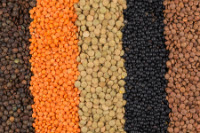
You can find lentils in the bulk bin aisle or in prepackaged containers.
A few tips on purchasing and cooking:
When purchasing in bulk, try to buy organic and make sure there is no moisture in the bin or in the packaging. Look for whole, not cracked lentils. Store them in an airtight container in a cool, dark and dry place. They will keep up to a year. When buying canned lentils, watch for added salt or other preservatives. though I don’t recommend canned food AT ALL, just for your information, unlike other canned veggies, lentils do not lose much of their nutritional potency.
Lentils are easy to prepare (I do like to pre-soak them but if in a hurry, can cook without presoaking unlike other dry beans). Wash and strain lentils under cool water before cooking. You can boil lentils (I like to use my pressure cooker as a matter of habit, but you can use an Instant Pot as well if you have one) and store in the fridge for later use in casseroles, soups, rice or pasta dishes, salads, spreads/hummus, or soups. Cooked lentils stay fresh in the fridge in a covered container for about three days.
Write in the comments if you liked these tips and how you use lentils and share some of your favorite recipes if you can so all of us can benefit.
I look forward to hearing from you!
References:
-
Future of Food: Pulses & Nutrition. Accessed on 6 Sep 2016: http://pulses.org/future-of-food/pulses-nutrition
-
Video: NutritionFact.org. “Diabetics Should Take Their Pulses” http://nutritionfacts.org/video/diabetics-should-take-their-pulses/
-
Helmstadter, A. “Antidiabetic drugs used in Europe prior to the discovery of insulin.” Pharmazie (2007) 62(9):717 – 720. http://www.ncbi.nlm.nih.gov/pubmed/17944329
-
MedicalNewsToday.com. Accessed 6 Sep 2016: http://www.medicalnewstoday.com/articles/297638.php
-
World’s Healthiest Foods: Lentils. Accessed 6 Sep 2016: http://www.whfoods.com/genpage.php?tname=foodspice&dbid=52
-
Singhal, P., Kaushik, G., Mathur,P. “Antidiabetic potential of commonly consumed legumes: A review.” Crit Rev Food Sci Nutr (2014) 54(5):655 – 672. Accessed 6 Sep 2016: http://www.ncbi.nlm.nih.gov/pubmed/24261538
-
Thompson, S.V., Winham, D.M., Hutchins, A.M. “Bean and rice meals reduce postprandial glycemic response in adults with type 2 diabetes: A cross-over study.” Nutr J (2012) 11:23. Accessed 6 Sep 2016: http://www.ncbi.nlm.nih.gov/pubmed/22494488
-
MindBodyGreen.com. “7 Health Benefits of Lentils” Accessed 6 Sep 2016: http://www.mindbodygreen.com/0-5488/7-Health-Benefits-of-Lentils.html
Image attribution: rtsubin/bigstockphoto.com
The information offered by this blog is presented for educational purposes. Nothing contained within should be construed as nor is intended to be used for medical diagnosis or treatment. This information should not be used in place of the advice of your physician or other qualified health care provider. Always consult with your physician or other qualified health care provider before embarking on a new treatment, diet or fitness program. You should never disregard medical advice or delay in seeking it because of any information contained within this blog. © Praana Integrative Medicine & Holistic Health Center, LLC. All rights reserved
Dr. Manisha Ghei February 19th, 2017
Posted In: Blog Post, Food, Integrative Medicine, Recipes
Tags: blood sugar, cholesterol, Diabetes Mellitus, Fiber, functional medicine, healthy heart, heart health, heart health month, heart healthy foods, heart healthy recipe, lentils, mindful eating, nutrition, recipe
Have Diabetes? Try Bitter Melon (Momordica charantia)

A cousin of watermelon, cucumber and pumpkin, Bitter Melon is shaped like a cucumber, only larger with lighter green and more gourd-like skin. In tropical cultures, where it’s cultivated, bitter melon is used to support digestion because of its ability to break down carbohydrates. When using for medicinal purposes, the entire plant can be used, dried or fresh, from leaves and stems to the actual juice.
Holistic physicians and researchers are interested in Bitter Melon for its effect on blood glucose levels in patients with diabetes mellitus. Chemicals in the extract act similar to insulin. A number of studies have found that bitter melon juice, fruit and dried powder have a moderate effect on lowering blood glucose. In other studies, a “plant insulin” injection given to patients with Type-1 diabetes showed a decrease in blood glucose. The decrease was not as significant for patients with Type-2 diabetes, but there was a decline in blood glucose levels compared to a control group. It seems that source and type of preparatio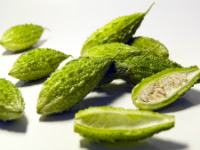 n, as well as individual patient factors, may play a role in the effect of bitter melon on diabetes, which will inspire further research.
n, as well as individual patient factors, may play a role in the effect of bitter melon on diabetes, which will inspire further research.
In India, bitter melon is used to make different vegetable preparations. Juicing is another way to utilize its beneficial properties but since it is very bitter, I like to use some raw honey, beets, carrots and green apple with it. You can also blend bitter melon into various foods and enjoy it several times a week when it is in season.
Although considered relatively safe, consult your holistic practitioner to determine the appropriate type and amount to use for your particular needs. If you are pregnant or nursing, only use the supplement under the care of a qualified practitioner.
References:
-
Basch, E. et al, “Bitter Melon (Momordica charantia): A Review of Efficacy and Safety” American Journal of Health-System Pharmacy (2003). Web: 6 Sep 2016: http://www.ajhp.org/content/60/4/356.short
-
Shane-McWhorter, L. “Dietary Supplements for Diabetes: An Evaluation of Commonly Used Products.” Diabetes Spectrum (Sep 2009), 22 (4) 206-213; DOI: 10.2337/diaspect.22.4.206 http://jn.nutrition.org/content/133/4/1088.short
-
Fuangchan, A., et al,. “Hypoglycemic effect of bitter melon compared with metformin in newly diagnosed type 2 diabetes patients.”Journal of Ethnopharmacology (Mar 2011) 134 2: 422-428. Accessed 6 Sep 2016: http://dx.doi.org/10.1016/j.jep.2010.12.045 http://www.sciencedirect.com/science/article/pii/S0378874110009219
-
National Bitter Melon Council. http://bittermelon.org/eat/cookingbittermelon
Image attribution: oddief1/bigstockphoto.com
The information offered by this blog is presented for educational purposes. Nothing contained within should be construed as nor is intended to be used for medical diagnosis or treatment. This information should not be used in place of the advice of your physician or other qualified health care provider. Always consult with your physician or other qualified health care provider before embarking on a new treatment, diet or fitness program. You should never disregard medical advice or delay in seeking it because of any information contained within this blog. © Praana Integrative Medicine & Holistic Health Center, LLC. All rights reserved
Dr. Manisha Ghei February 19th, 2017
Posted In: Blog Post, Food, Integrative Medicine, Recipes
Tags: Bitter Melon, Diabetes Mellitus, Food, functional medicine, Functional Nutrition, heart healthy recipe, Insulin Resistance, nutrition, recipe, Vegetable
Protected: Spiced Pumpkin Bread: A Fall Favorite

Dr. Manisha Ghei February 28th, 2016
Posted In: Blog Post, Food, Functional Nutrition, Recipes
Tags: antioxidant, Bread, Pumpkin, recipe, Spiced Pumpkin Bread, spices
Protected: Pumpkin: Not just for Halloween decor!

Dr. Manisha Ghei February 28th, 2016
Posted In: Blog Post, Food, Functional Nutrition
Tags: antioxidant, B vitamins, beta carotenes, Dietary Fiber, Fall, Flavonoids, Halloween, nutrient, nutrition, Pumpkin
Hawthorn: The Heart Healthy Herb

Hawthorn (Crataegus oxyacantha)
Hawthorn, also known as Maybush, is a thorny shrub found on hillsides and in sunlit woodsey areas throughout the world. Over centuries, all parts of the plant have been used to prepare foods, beverages, and medicines. In folk medicine, Hawthorn was used for the treatment of diarrhea, insomnia, and asthma. In China, it has been used to treat digestive problems, high cholesterol, poor circulation, and shortness of breath. During the early 1800s, doctors in North America used Hawthorn for heart conditions, circulatory, and respiratory disorders.
Hawthorn has a rich supply of flavonoids (antioxidants that protect cells from damage) and anti-inflammatory properties, which are important to heart health. It plays a role in helping dilate blood vessels, improves blood flow to the heart, and can lower blood pressure. In Europe, Hawthorn is regarded as a safe and effective treatment for early-stage heart disease. It is used to promote the health of the circulatory system and in patients with angina, high blood pressure, and congestive heart failure. In studies, patients with heart failure who took Hawthorn showed improvement in clinical symptoms and sense of wellbeing.

Hawthorn is available as tea, capsule, tincture, and standardized extract found in prescription drugs, over-the-counter medication, standardized herbal medicine, or dietary supplements. Before taking Hawthorn, especially if you suspect or have a heart or lung condition, consult with a FUnctional medicine / Integrative holistic medical professional.
Resources
Hawthorn. Complementary and Alternative Medicine Guide. University of Maryland Medical Center Online. https://umm.edu/health/medical/altmed/herb/hawthorn
Johnson, Rebecca L. & Foster, Steven et al., National Geographic Guide to Medicinal Herbs: The World’s Most Effective Healing Plants. (National Geographic Society. (2010, 2014), 123-125.
Hawthorn Berry (Crateagus Oxycanthus): Health Benefits. http://www.herbwisdom.com/herb-hawthorn-berry.html
Mars, Bridgitte & Fiedler, Chrystle. Home Reference Guide to Holistic Health & Healing. (Beverly, MA: Fair Winds Press. 2015.), 189.
Dahmer, S., Scott, E. “Health Effects of Hawthorne,” Amer Family Phys. (Feb 15, 2010) 81:4, 465-468. Accessed: Dec. 09, 2015: http://www.aafp.org/afp/2010/0215/p465.html
Chang, W., Dao, J., and Shao, Z. “Hawthorn: Potential Roles in Cardiovascular Disease.” American Jnl. Chinese Medicine (January 2005) 33:01, pp. 1-10. DOI: 10.1142/S0192415X05002606. http://www.worldscientific.com/doi/abs/10.1142/S0192415X05002606?url_ver=Z39.88-2003&rfr_id=ori%3Arid%3Acrossref.org&rfr_dat=cr_pub%3Dpubmed&
ie Wang, Xingjiang Xiong, and Bo Feng, “Effect of Crataegus Usage in Cardiovascular Disease Prevention: An Evidence-Based Approach,” Evidence-Based Complementary and Alternative Medicine, vol. 2013, Article ID 149363, 16 pages, 2013. doi:10.1155/2013/149363.
http://www.hindawi.com/journals/ecam/2013/149363/
Image attribution: morisfoto/bigstockphoto.com
The information offered by this blog is presented for educational purposes. Nothing contained within should be construed as nor is intended to be used for medical diagnosis or treatment. This information should not be used in place of the advice of your physician or other qualified health care provider. Always consult with your physician or other qualified health care provider before embarking on a new treatment, diet or fitness program. You should never disregard medical advice or delay in seeking it because of any information contained within this blog.
Dr. Manisha Ghei February 7th, 2016
Posted In: Blog Post, Uncategorized
Tags: angina, blood pressure, congestive, February, functional medicine, hawthorn, healthy heart, heart disease. heart health, heart health, heart health month, heart healthy foods, vascular health
Protected: Heart Healthy Pomegranate Spinach Salad

Dr. Manisha Ghei February 7th, 2016
Posted In: Uncategorized
Tags: antioxidant, blood pressure, February, functional medicine, hazelnuts, healthy heart, heart health, heart healthy foods, heart healthy recipe, nutrition, pomegranate, radicchio, recipe, spinach, vascular health
The Heart Healthy Fruit!
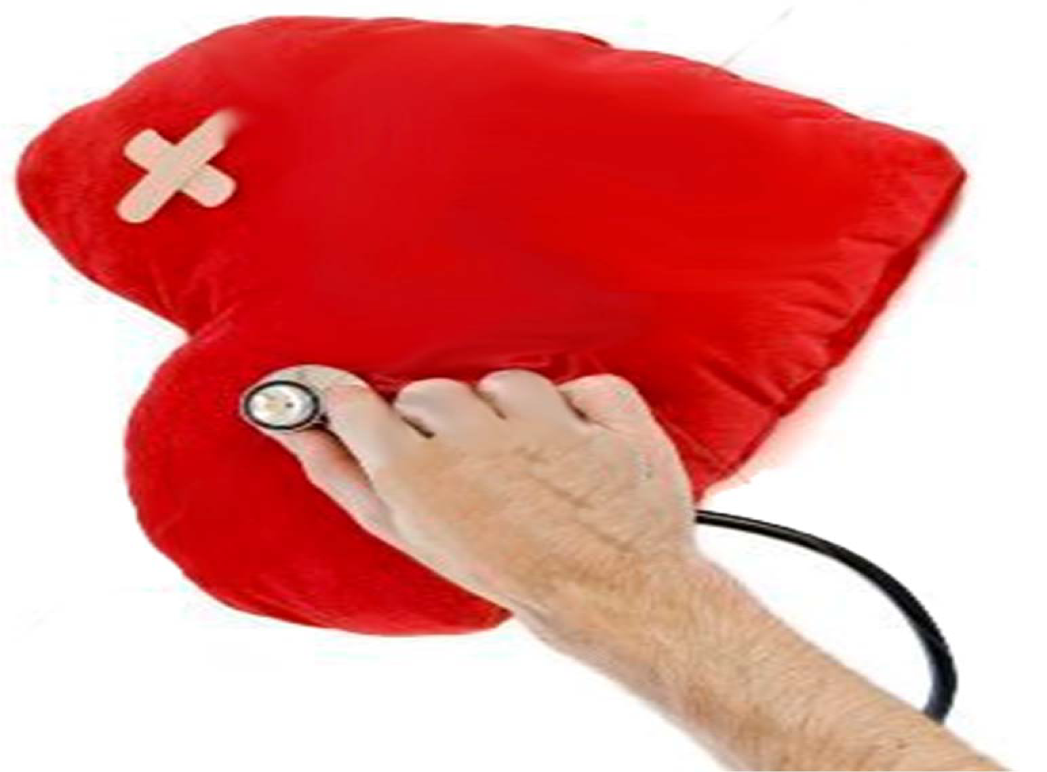
Mighty Pomegranate (Punica granatum)

Inside a lumpy, thick-skinned pomegranate you’ll find a treasure of jewel-like arils-ruby seeds surrounded by sacs of flavorful juice. Pomegranate is both richly sweet and tart and exceptionally refreshing. Savor the flavor by eating the arils by the spoonful, adding them to salads or to a bowl of Greek yogurt. Any way you choose, you’ll reap the health benefits of this exotic fruit.
Pomegranate is native to the mountainous regions along the Caspian Sea, near northern Iraq and northwest Iran. For centuries, cultures around the world have used all parts of the tree—roots, bark, flowers, peel, seed and seed oil—medicinally to treat a range of health concerns, from digestive disorders and dysentery, to fever and heart ailments. In the West, the fruit and seed are typically used in medicinal preparations. Modern research indicates that pomegranate may be beneficial for reducing risk and supporting treatment for arthritis, certain types of cancers, erectile dysfunction, and heart disease.
A compound found only in pomegranates called punicalagin is beneficial to the heart and blood vessels. Punicalagin is responsible for pomegranate’s antioxidant effects. In fact, pomegranate has more antioxidant power than red wine and green tea! Preliminary research shows that drinking unsweetened pomegranate juice helps lower cholesterol, lower blood pressure, improve blood flow to the heart, and may help protect against the formation of blockages in the arteries. Further research is needed to determine how much pomegranate juice (or as a nutritional supplement) is beneficial for different people and for different health concerns.
When buying pomegranate, don’t shy away from a fruit that isn’t perfectly round or feels heavy. Unusual shape, and weight indicate a fruit that is plump with arils and juice. Pomegranates do not sweeten once picked, so you’ll want to avoid fruits that look dried out.
Resources
Johnson, Rebecca L. & Foster, Steven et al., National Geographic Guide to Medicinal Herbs: The World’s Most Effective Healing Plants. (National Geographic Society. (2010, 2014), 249-251.
Swanson, H. Super Natural Cooking: Five Ways to Incorporate Whole and Natural Ingredients Into Your Cooking. (2007), 80. Ten Speed Press: Berkeley, CA.
Pomegranates and Health. (Recipes and other Resources) http://pomegranates.org/index.php?c=3
Medline Plus. Pomegranate. https://www.nlm.nih.gov/medlineplus/druginfo/natural/392.html
National Center for Complementary and Integrative Health. Pomegranate. https://nccih.nih.gov/health/pomegranate/at-a-glance
Basu, A., Penugonda, K. “Pomegranate juice: a heart-healthy fruit juice.” Nutr Rev. (2009) Jan: 67(1):49-56. doi: 10.1111/j.1753-4887.2008.00133.x. Accessed on: Dec 8, 2015. http://www.medicatrix.be/download/grenade_protecteur_cardiovasculaire.pdf
Stowe, C.B., “The effects of pomegranate juice consumption on blood pressure and cardiovascular health.” Complement Ther Clinical Pract., (2011, May), 17(2):113-5. doi: 10.1016/j.ctcp.2010.09.004. Available from: http://www.ctcpjournal.com/article/S1744-3881(10)00076-9/abstract
Sumner Michael D., Elliot-Eller, M. et al., “Effects of Pomegranate Juice Consumption on Myocardial Perfusion in Patients With Coronary Heart Disease.”: Amer Jnl of Cardiology. (2005) 810-814. Date Accessed: Dec 08, 2015: http://www.ornishspectrum.com/wp-content/uploads/Effects-of-Pomegranate-Juice-Consumption-on-Myocardial.pdf
Seeram NP, Aviram M, Zhang Y, et al., “Comparison of antioxidant potency of commonly consumed polyphenol-rich beverages in the United States.” J Agric Food Chem (2008), 56:1415-1422. Accessed on Dec 08, 2015: http://www.pubfacts.com/detail/18220345/Comparison-of-antioxidant-potency-of-commonly-consumed-polyphenol-rich-beverages-in-the-United-State
Aviram M, Rosenblat M, Gaitini D, et al. “Pomegranate juice consumption for 3 years by patients with carotid artery stenosis reduces common carotid intima-media thickness, blood pressure and LDL oxidation.” Clin Nutr (2004). 23(3):423-33. Date Accessed: Dec 08, 2015: http://www.wonderfulpomegranateresearch.com/media/pdf/health/HH_2004_Aviram_ClinNutr_PJ_Consump_3Years_Carotid_021.pdf
Image attribution:
Geo-grafika/bigstockphoto.com |
The information offered by this blog is presented for educational purposes. Nothing contained within should be construed as nor is intended to be used for medical diagnosis or treatment. This information should not be used in place of the advice of your physician or other qualified health care provider. Always consult with your physician or other qualified health care provider before embarking on a new treatment, diet or fitness program. You should never disregard medical advice or delay in seeking it because of any information contained within this blog.
Dr. Manisha Ghei February 7th, 2016
Posted In: Blog Post
Tags: antioxidant, arthritis, blood pressure, cancer, cholesterol, erectile dysfunction, February, healthy heart, heart disease. heart health, heart healthy foods, nutrition, pomegranate, vascular health
Secrets to a Healthy Heart
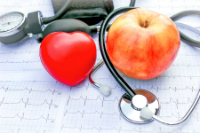
 Long before the ancient Greek surgeon Galen carried out meticulous dissections of the heart, the Egyptians wrote about health and disease in relation to how the heart “speaks in vessels” with the rest of the body. Today, physicians may not associate the heart with the soul (or soul mates), but many credit early Egyptian medical knowledge of the heart as a precursor to modern cardiology.
Long before the ancient Greek surgeon Galen carried out meticulous dissections of the heart, the Egyptians wrote about health and disease in relation to how the heart “speaks in vessels” with the rest of the body. Today, physicians may not associate the heart with the soul (or soul mates), but many credit early Egyptian medical knowledge of the heart as a precursor to modern cardiology.
The Heart: Powerful, but Vulnerable
A key element of a healthy body is a healthy heart. The heart is the center of our cardiovascular system and beats an average of 100,000 times per day supplying oxygen rich blood to the whole body. Every day we make choices that have a profound affect on the health of this vital organ. Most heart disease (HD) is linked to inflammatory risk factors such as lack of exercise, obesity, smoking, stress, and poor eating habits.
One major condition that can develop with these risk factors is Hypertension, also known as high blood pressure. Often called the ‘silent killer’, Hypertension can cause significant damage throughout the cardiovascular and other body systems and ultimately results in over 80 million deaths each year.
The Silent Killer
Blood pressure is the amount of pressure exerted on the inside of blood vessels as the heart pumps the blood through the body. When there is resistance in the vessels, the pressure rises and hypertension results. The longer hypertension goes undetected and/or uncontrolled, the greater the damage to blood vessels and other organs. Hypertension can lead to heart attack, stroke, ruptured blood vessels, kidney disease or failure, and heart failure.
Warning signs for high blood pressure are rare but can include headaches, blurred vision, light-headedness, shortness of breath and nosebleeds. However, there are typically no warning signs or symptoms for hypertension, which is why it is called the silent killer.
Hypertension is diagnosed by looking at 2 numbers in your BP reading: Systolic pressure (the top number) is the pressure in your arteries when the heart beats (contracts). Diastolic pressure (bottom number) represents the pressure in your arteries between beats.
• Normal blood pressure is below 120/80
• Prehypertension is 120 – 139 systolic or 80 – 89 diastolic.
• Hypertension is 140/90 or higher
The Potassium Secret for a Healthy Heart
You’ve no doubt heard the best thing to do when you have hypertension is to reduce the amount of salt/sodium in your diet. Did you know the average adult needs 4,700 mg of potassium daily compared to only 200 mg of sodium. Unfortunately for most of us, our eating habits give us way too much sodium – 3,300 mg a day – and not nearly enough potassium. This imbalance can increase your risk of developing hypertension.
What’s truly important for your heart, and a more accurate strategy to prevent high blood pressure, is to balance the relationship between potassium and sodium (salt) in your daily diet. Proper sodium-potassium balance is necessary for nerve transmission, muscle contraction, fluid balance, and the optimal health of all the cells in your body. In regard to the heart, potassium is particularly important for regulating heart rhythm and maintaining blood pressure.
By reducing your sodium intake, you are often correcting the sodium-potassium imbalance without realizing it. To further support your heart health, eat more potassium-rich foods such as sweet potato, spinach, banana, peas, legumes, apricots, avocados, halibut and molasses.
More Healthy Heart Tips & Heart-Healthy Diet Do’s:
- Eat a variety of fresh fruits and dark green veggies daily.
- Use plant-based oils for cooking.
- Eat mindfully, not on-the-run.
- Reduce or eliminate packaged foods, sugar, and red meat.
- Walk, No Need to Run: 30 minutes of daily, brisk walking lowers your risk for hypertension.
- Be Calm: Learn to manage stress with healthy coping techniques, such as, deep breathing, yoga, meditation, gratitude journaling, and getting quality sleep.
- Supplemental Support: Nutritional supplements shown to support heart health include Hawthorn, CoQ10, Essential Fatty Acids (Omega 3), Magnesium, Garlic and B-vitamins. Always speak with your Integrative/ Functional Medicine physician as to which forms of these supplements and what doses are optimal for you as all forms are not equal in efficacy or quality. Supplements you might have heard about—Natto-K (nattokinase), Guggul, or Niacin—should not be taken without the supervision of your health practitioner.
Because some blood pressure medications affect the potassium level in the body, be sure and discuss the best strategy for making this adjustment with your Functional Medicine Physician /Integrative Holistic Doctor.
Resources:
Murray, M. “Hypertension” as cited in Pizzorno, Joseph E. (2013). Textbook of Natural Medicine. St. Louis, MO Elsevier. (chapter 174), 1475-1485.
Johnson, R.L., S. Foster, Low Dog, T. and Kiefer, D. “Plants and the Heart” in National Geographic Guide to Medicinal Herbs: The World’s Most Effective Healing Plants. Washington, D.C.: National Geographic, 2012. 100-101.
Centers for Disease Control and Prevention, National Center for Health Statistics. Underlying Cause of Death 1999-2013 on CDC WONDER Online Database, released 2015. Data are from the Multiple Cause of Death Files, 1999-2013, through the Vital Statistics Cooperative Program. Accessed on December 11, 2015.: http://wonder.cdc.gov/ucd-icd10.html
Mayo Clinic. “High Blood Pressure- Hypertension.” Updated November 10, 2015. http://www.mayoclinic.org/diseases-conditions/high-blood-pressure/basics/definition/con-20019580
National Heart, Lung & Blood Institute. “Risk Factors for High Blood Pressure.” Updated September 2015. http://www.nhlbi.nih.gov/health/health-topics/topics/hbp/atrisk
Lelong, H., Galan, P. et al., “Relationship Between Nutrition and Blood Pressure: A Cross-Sectional Analysis from the NutriNet-Santé Study, a French Web-based Cohort Study” Am J Hypertens first published online September 3, 2014 doi:10.1093/ajh/hpu164. Accessed on Dec 21, 2015: http://ajh.oxfordjournals.org/content/early/2014/09/03/ajh.hpu164
Study above cited in Time magazine article, accessed on Dec 21, 2015: http://time.com/3313332/salt-and-blood-pressure/
Appel, L.J., Brands, M.W., et al., American Heart Association. “Scientific Statement: Dietary Approaches to Prevent and Treat Hypertension.” Updated January 2014. http://dx.doi.org/10.1161/01.HYP.0000202568.01167.B6
American Heart Association. “Learn more about heart disease and high blood pressure.” Accessed on December 11, 2015. http://www.heart.org/HEARTORG/Conditions/HighBloodPressure/High-Blood-Pressure-or-Hypertension_UCM_002020_SubHomePage.jsp
American Heart Association. “Walk, Don’t Run Your Way to a Healthy Heart.” Accessed on December 11, 2015.
http://www.heart.org/HEARTORG/GettingHealthy/PhysicalActivity/Walking/Walk-Dont-Run-Your-Way-to-a-Healthy-Heart_UCM_452926_Article.jsp#.Vop0pDYwcrg
Also see:
http://www.heart.org/HEARTORG/Conditions/Conditions_UCM_001087_SubHomePage.jsp
American Heart Association. “Walking Can Lower Risk of Heart Related Conditions” Accessed on December 11, 2015.
http://newsroom.heart.org/news/walking-can-lower-risk-of-heart-related-conditions-as-much-as-running
American Heart Association. “Potassium and high blood pressure.” Last Updated August 04, 2014. Accessed on December 11, 2015.
http://www.heart.org/HEARTORG/Conditions/HighBloodPressure/PreventionTreatmentofHighBloodPressure/Potassium-and-High-Blood-Pressure_UCM_303243_Article.jsp#.Vopz2DYwcrg
Harvard School of Public Health. “Shifting the Balance of Sodium and Potassium in Your Diet.” Accessed on December 11, 2015. http://www.hsph.harvard.edu/nutritionsource/sodium-potassium-balance/
Linus Pauling Institute: Micronutrient Information Center. “Sodium (Chloride).” Last Reviewed 2008. Accessed on December 11, 2015. http://lpi.oregonstate.edu/mic/minerals/sodium
Linus Pauling Institute: Micronutrient Information Center. “Potassium.” Last Reviewed 2010. Accessed on December 11, 2015. http://lpi.oregonstate.edu/mic/minerals/potassium
Image attribution:
lola1960/bigstockphoto.com |
The information offered by this blog is presented for educational purposes. Nothing contained within should be construed as nor is intended to be used for medical diagnosis or treatment. This information should not be used in place of the advice of your physician or other qualified health care provider. Always consult with your physician or other qualified health care provider before embarking on a new treatment, diet or fitness program. You should never disregard medical advice or delay in seeking it because of any information contained within this blog.
Dr. Manisha Ghei February 7th, 2016
Posted In: Blog Post
Tags: blood pressure, February, healthy heart, heart health, heart health month, heart healthy foods, hypertension, mindful eating, nutrition, potassium




